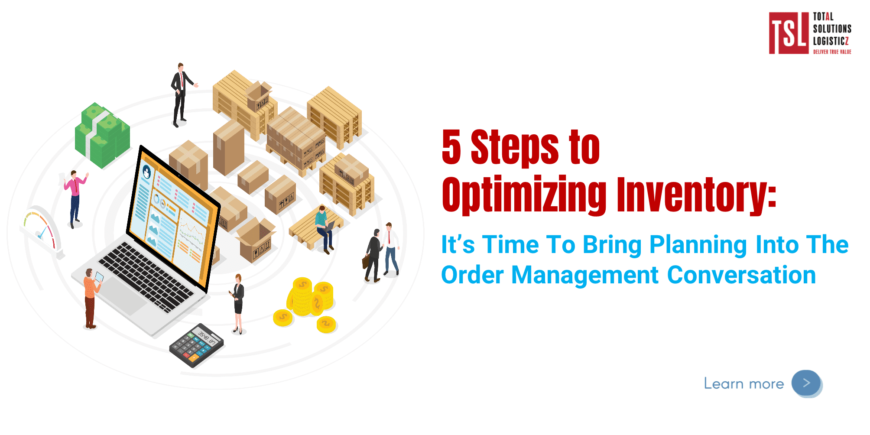5 Steps to Optimizing Inventory: It’s Time To Bring Planning Into The Order Management Conversation
How can retailers to inventory is optimally located for that final leg of the journey? Linking demand and fulfillment with inventory planning remains an under explored advantage that will help combat consumer expectations that span not just speed and convenience, but sustainability too.
Essentially, shoppers want ultimate agility at the lowest possible price. For the retailer, this incorporates fulfillment considerations including click and collect, ship from store, the need for micro-fulfillment centers, different logistics models, the use of third-party transport partners, and much more.
But these tools and methodologies can only hit their mark if inventory is already close to where demand truly is.
Here Are 5 Key Considerations That Can Help Realize This Goal:
1. Location, location, location
At present there is a split between how demand and fulfillment locations are measured. For example, if you’re a fashion retailer with your stock of summer clothing located in a region that is expecting rain for the next day, while demand is actually coming from hundreds of miles away in the middle of a2 heatwave, you may have planned overall replenishment effectively, but speedy fulfillment will be a challenge.
The way retailers are currently using siloed planning data to replenish and drive inventory placement is going against the grain of convenience for the customer. Adapting to real-time events and resultant demand hotspots, in real-time, is likely to be too late as a result.
These expectation spikes have to be brought into the initial inventory placement planning process, to ensure there isn’t a delivery lag once people click ‘buy.’
2. “Speed and convenience” aren’t just cliches
It sounds obvious, but it’s worth banging the drum one more time for those who think they already have a better grasp on consumer demand in the omni-channel era. The adoption of artificial intelligence tools to better respond to consumer demand is a step change, for sure, but the interconnectivity of supply chain solutions, across planning and order management, is where decision makers should now be looking.
In the U.S., a survey from November 2020 emphasized that even then, the number of customers who prioritized convenience in their shopping trips had almost quadrupled compared to the start of the pandemic. In Europe, the situation is no different, with a 2021 UK study confirming that, for more than three-quarters of consumers, the major factor that drives their desire to shop online more is convenience.
Note: convenience doesn’t just mean “as quick as you can.” Sometimes, it might mean: “right now,” and you can only meet that demand if your inventory is nearby.
3. Be more “holis-tech”
Typically, through their adopted systems, retailers are looking at order management and the orchestration of fulfillment options in one column; and planning as a second, disconnected function.
Left out of the equation altogether is inventory placement, which is not currently seen as part of a traditional order management platform. What is critical moving forward, is a more holistic view of tech infrastructure, to bring fulfillment trends into the initial inventory planning process.
To simplify this notion, think of future order management as three legs of a tripod, peaking together at the top: Replenishment of inventory in the right location; Orchestrating the correct fulfillment location; Executing that fulfillment with the requisite scope of choice and logistics partners in tow
4. Get the first mile right
Changing the mindset around the tech at retailers’ disposal isn’t easy, considering that most order management solutions (OMS) have never sought to make this connection with inventory planning. They advise optimum fulfillment, but don’t account for the inventory being in the right place. Shortfalls in nearby stock inevitably lead to dissatisfied customers should orders be delayed on account of longer distribution times. And this is before you address the unnecessary costs and emissions used to make that longer — late — journey.
This can all be offset by making delivery times as short as possible, courtesy of stock already being on customers’ doorsteps. Improving last mile costs of delivery, speed of fulfillment, flexibility of fulfillment options, and sustainability throughout, all relies on where you’ve planned that inventory to be during the first mile.
5. AI Can Facilitate a New Conversation
Retailers need to be thinking of inventory assortment, placement and management as part of their order management conversations. In this respect, replenishment and planning have to be part of the same process, connected by the data at an organizations’ disposal.
AI helps to veer away from static methods traditionally used in most order management platforms, towards a dynamic model which takes into account the most efficient, sustainable, quick and appropriate location for inventory, so that fulfillment is optimized.
Known as cognitive inventory or probabilistic inventory, the human brain is unable to plan at such a complex scale. But with AI, retailers can now prepare for a future where stock is always where it’s most needed, at the right volume. The power of connecting planning with OMS then unlocks optimal guidance around that inventory’s utilization and delivery decisions.
Increased sales, improved conversation rates, enhanced customer experiences, heightened sustainability and saved margins are the upshots on offer, should the conversation change.









